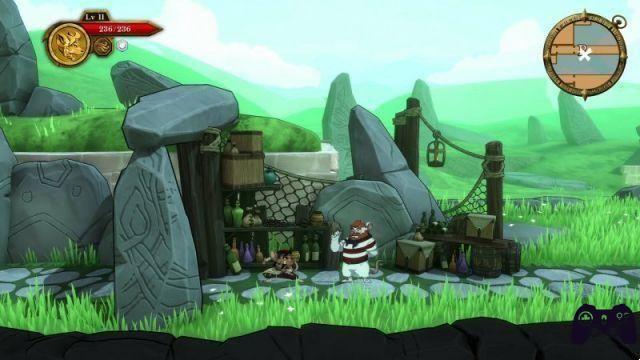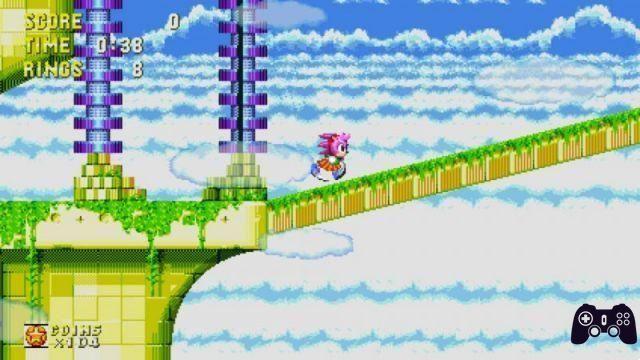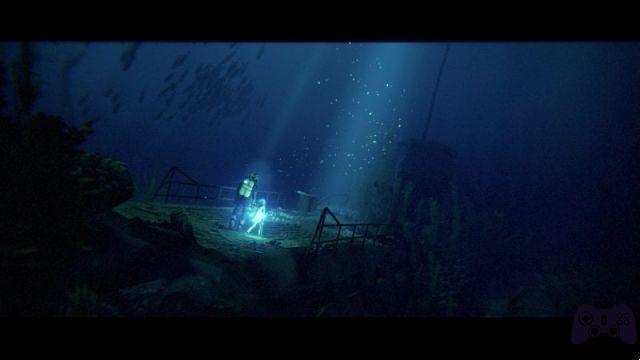
Presented with great fanfare during theE3 2013, immediately The Order: 1886 he managed to get people talking about himself. It only took a few confusing trailer images to generate around the new IP of Ready at Dawn a lot of interest from the gaming community.
An important title, which marks the debut of Ready at Dawn on PlayStation 4 with a new intellectual property that has allowed him to leave behind a past made up of porting and portable versions of the most famous brands. The Order: 1886 has effectively become a media case and much of the attention is due to Sony, which has been able to push one of its strongest and most promising exclusives properly. After the constant rumors on the exclusive PlayStation 4, and an interesting chat with the developers, we have put our hands on one of the most anticipated titles of this season. Heralded masterpiece or yet another flash in the pan? Find out with our review.
Fifty shades of Grayson
Years of Ready at Dawn experience spills over to PlayStation 4, creating a true work of art on the goOne of the strongest aspects of The Order is certainly its graphics sector. Without a shadow of a doubt we are facing one of the most technically important and majestic titles available for consoles. Years of Ready at Dawn experience spills over to PlayStation 4, creating a true work of art on the go. Every square inch of the game, every single glimpse of the uchronic London that you will visit hides an incredible attention to detail that is almost manic. The game view will be full of elements, whether we are in the claustrophobic corridors of a gallery or in the wider views of the city. From textures to lighting through video effects, such as film grain or lens flare, everything is made with painstaking attention.
This only to give life to a dark and decadent London, although living one of the highest moments of its development, and which manages to be the perfect setting for a dark story that talks about secret orders, brutal murders and werewolves. A lot of graphic beauty is made possible thanks to the power of the console, in addition to the great work carried out by the team of graphic designers, who despite resorting to various tricks have managed to offer the public a first-rate visual experience.
As this generation has accustomed us by now, one of the accusations leveled at the developers was that of the resolution of the game.
A "structural linearity" that does not undertake to enhance the action part of the title
Once again the pixels are the masters and the resolution gate reaps another victim again. Compromising regarding the relationship between resolution and fps, at least on consoles, is a delicate issue that has been discussed for years now. And The Order is no exception. The need to keep such high video quality almost unchanged for the entire duration of the game, forced programmers to lower the resolution to 800p, setting the frame rate at 30fps. All this served to ensure high fluidity in movement and not to ruin the gaming experience. To help also the choice of a cinematic aspect ratio (21: 9) that goes well with the interactive film cut that the game has, although it involves the presence of two black bands on the video. Unfortunately, however, even the technical realization has its own Achilles heel, which translates into an anonymous level design with no use for gameplay purposes. As you will have understood not in the appearance, but in the skeleton of the levels themselves.
On balance The Order is a huge corridor that connects the various areas to each other where we will have to act actively, acting as a glue to what is in effect a third person shooter, along the lines of a Gears of War or Uncharted. A "structural linearity" that does not undertake to enhance the action part of the title, but rather helps to overshadow it. The exploration of the surrounding environment is also affected, which is limited, almost cut off from a gameplay that does not allow you to get out of some imposed tracks. You proceed with your head down, accompanied by a narrative that is all too present and invasive features that, most of the time, leaves the player helpless pad in hand for tens of minutes, as a simple spectator, or at best. it makes it participate, making use of simple QTEs.
An American werewolf in London
The firing system is based on covers, inspired by the classics of the genreAnd here we find ourselves ferried into the heart of the gameplay, which throws various elements into the cauldron without being able to enhance the individual aspects. For example, if we take and we isolate the shooting part, we have a rather basic although very solid structure and well functional. The firing system is based on covers, inspired by the titles mentioned a few lines above. You shoot mainly from behind some cover to dodge enemy fire. Just get close to some ledge, press the Circle button and quickly we will be safe. From our advantageous position, we can then decide how to act, whether to open direct fire on the enemies aiming with precision or stay covered and shoot blindly, perhaps helping us with grenades and smoke bombs. Our protagonist can then also take advantage of a sort of bullett-time, which will stop the action allowing us to take out for the duration of our time available the enemies that will be in our field of vision. A useful technique, but which risks becoming abused during the adventure due to the simplicity and speed with which it recharges. But that is not all, we will also be able to take advantage of a melee move to knock out an enemy or another for eliminate it in a stealth and painless way (certainly not for him), all obviously if done with the right timing and pressing the Triangle button.
On the screen no health indicator, which will be indicated based on how much the game view will blur, forcing us to rest before returning to the attack again. In the event of a fall on the battlefield, before perishing and starting over from the previous checkpoint it will be possible to recharge our "vitality" with theBlack Water, capable of restoring our strength. On the enemy front it must be said that they are regulated by an AI that is not exactly reactive, which affects the dynamism of the firefights, also underlining a certain "flatness" here, with us on the one hand firing on the enemy, without this showing too much initiative trying to counterattack adequately. It is true, every now and then it will happen to be faced with fully armed enemies, ready to come and find us and on which we will have to unload our entire arsenal, but even in this case they are isolated phenomena and mostly events foreseen by the script .
God save the queen
Analyzing it under the lens we find many small pieces of a gameplay that, however, struggles to have its own identityWith us we will be able to carry a maximum of two weapons, a pistol and a rifle. During the adventure we will find ourselves dealing with the most varied types of firearms, from classic Magnums and carbines, to automatic rifles and snipers, passing through some deadly inventions of Nikola Tesla (yes, the famous scientist "father of electrical engineering" who here puts his brilliant mind at the service of the Order) as the lethal Termite, which requires a double activation to get into action, and then turns out to be downright lethal. A decidedly varied arsenal capable of adapting to everyone's tastes and styles.
Analyzing it under the lens we find many small pieces of a gameplay that, however, struggles to have its own identity. Beyond the TPS factor, tall that orbits around The Order are hints of situations that could be investigated and that in some situations a forcing of filling appears. To give a quick example, at some point in the story we can use the DualShock 4 to communicate via morse code (using the touch pad). Here, that will be the only use of the pad in The Order (in reality it can also be used to reverse the camera point of view, but by default it is disabled), and it's a shame because given the nature of the game it could be further integrated inside the mechanics.
… And people called him Galahad
The plot pleasantly intertwines myth and historical realityAnd let's not forget the story, which plays a predominant role in The Order. The cinematic cut of the graphics manages to enhance the events that revolve around this ancient order, of which Sir galahad, the protagonist, is part of it. The purpose of the order, born at the hands of King Arthur, it will be to act in secrecy and to protect London from the threats that follow one another year after year, century after century. A tangible danger that Lycan, a sort of werewolves who for generations claims victims and spreads terror on the streets of the English capital. The plot pleasantly intertwines myth and historical reality, peppering the surreal events with real historical elements and figures such as the aforementioned Nikola Tesla or Jack the Ripper, which in the very years in which The Order takes place terrorized the neighborhood of Whitechapel, theater of the events of the game. All told with a nice fast pace, especially in the early hours where, through the inevitable videos, we will be introduced into the game and its protagonists, all well-defined figures within the rich plot. Here too, unfortunately, not everything goes smoothly, getting lost along the way with a story that proceeds as if ready to explode at any moment, but which instead remains unexpressed and then ends hastily and delegate to a possible follow-up the task of giving us the answers we were looking for. Indeed at a certain point he seems to get lost in his story, with unexpected twists and new narrative elements that risk making everything fall into the banal and already seen, effectively ruining the opening incipit. As mentioned, the myriad of cut-scenes rather than identifying the player detach him more and more from the game, with too many dead moments between one part played and the other.
To support the adventure we find a soundtrack that does its job well. The songs present perfectly fit the dark and decadent atmospheres of the game, with melancholic symphonies ready to explode if necessary during the most excited phases of the game. The dubbing is also good, in which well-known voices from the videogame panorama appear such as Claudio Moneta (which we have already had the opportunity to listen to him recently in Assassin's Creed Unity e Far Cry 4) or Silvio Pandolfi who gives voice to the protagonist and that most will remember as the commander Shepard of the series Mass Effect.
It is also necessary to spend a few words on the duration of the game, another hot topic of discussion in the days before the release of The Order in stores. We are far from the necessary 4/5 hours boasted by some users who were lucky enough to get their hands on the game in advance. Our game, played on a normal level, ended approximately after about 7/8, in total tranquility and also dedicating our attention to collectibles that can be found "hidden" (not too much) within the various levels. The duration itself of The Order is absolutely not to be indicted, although it is a title that can be completed 100% in the course of an afternoon. Indeed, as we have seen several times, the number of hours of a game is not proportional to the quality of a title itself (a striking example is the narrative of a Ground Zeroes which is born and dies within an hour, manages to be more intense and fulfilling than much longer-lived adventures). What we can instead complain about the title Ready at Dawn is what the game manages to offer at that time. No co-op mode, no multiplayer online compartments, no extra content to unlock or prompts to entice players to pick up the game once you get to the epilogue. Not even the trophies, often a reason for some players to continue spending time to unlock the coveted Platinum (absent, to say, a trophy related to the difficulty of the game), can stimulate that much. Just a few collectibles, which if collected will offer a more detailed view of the narrative background of the world of The Order, thanks to vintage photos, newspaper clippings and audio files.
Verdict 7.5 / 10 Yes, but when do I start shooting? Comment The Order: 1886 is the classic wasted opportunity. A title that boasts a first-rate technical sector on consoles and a gameplay in itself also solid, but which fails to realize all the sketched ideas, focusing mainly on an all too invasive story (and not too convincing on the end) that steals the show from the actual game. It would have taken little on the gameplay front to improve a sterile sector, and offer the player an unforgettable experience from all points of view, but which instead remains suffocated and unexpressed by too many movies and dead moments that The Order offers. The hope is that Ready at Dawn will collect all the feedback received and correct the game for a possible sequel, which will certainly not be long in coming. Pros and cons ✓ Technically the most majestic title on consoles✓ Solid gameplay ...
✓ Well-defined characters and interesting story ... x Not very long-lived and lacking in extra content
x ... but inconsistent for the purposes of the game
x ... which, however, is lost at the end






